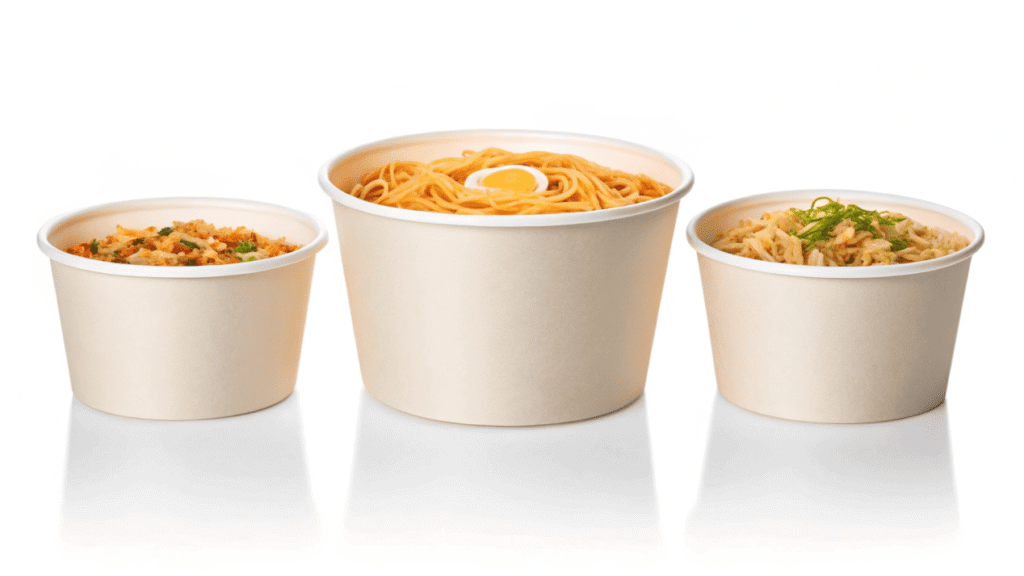Your noodle dishes are incredible, but the wrong takeaway container ruins them. Leaks, soggy bowls, and poor heat retention lead to unhappy customers and bad reviews for your business.
Choose the best noodle bowl by matching its size to your dish, ensuring it has a leak-proof lining like PE or PLA, and partnering with a reliable bulk supplier. The right bowl protects food quality, your brand, and operational efficiency.
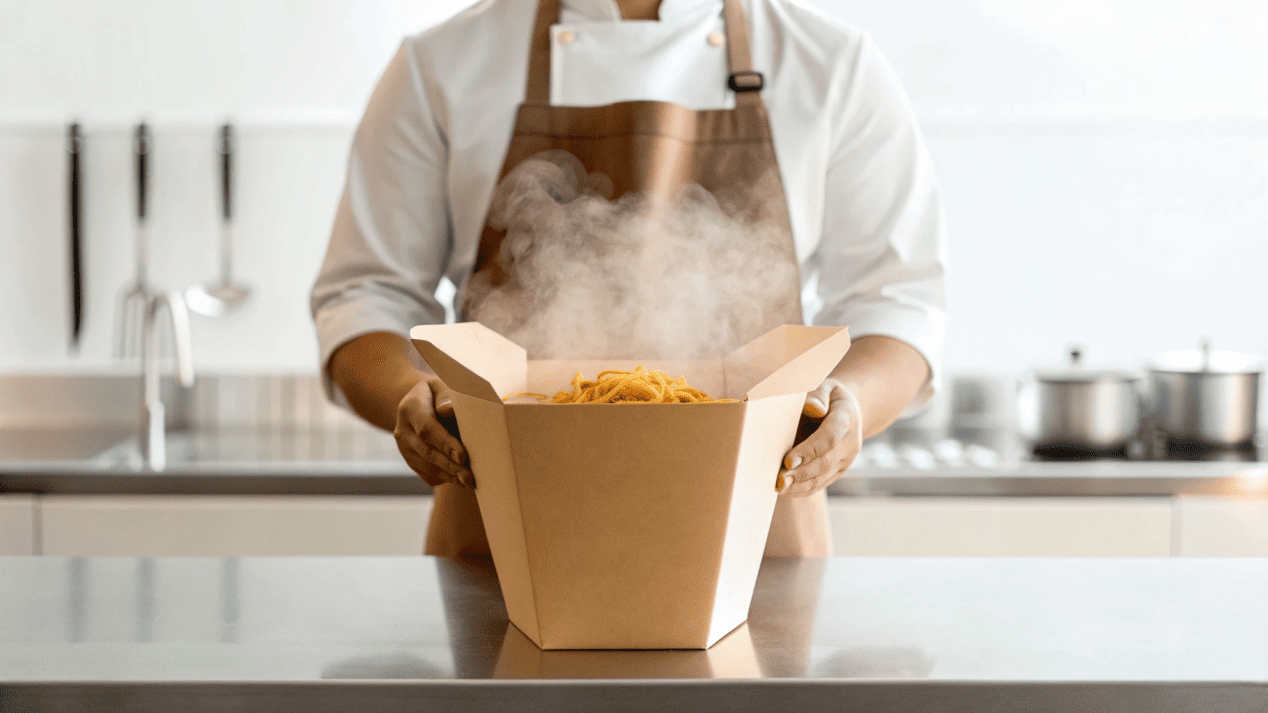
A few years ago, a ramen shop owner came to me. He was in a panic. His online reviews were starting to suffer, with complaints about "soggy bags" and "lukewarm soup." His ramen was amazing, but his cheap bowls couldn't handle the journey to the customer's home. The broth would weaken the paper, and the lids would pop off. We worked together to switch him to a high-quality, PE-lined bowl with a vented, tight-fitting lid. It cost a few cents more per bowl, but his bad reviews stopped overnight. The right container doesn't just hold the food; it protects the entire customer experience.
Which Noodle Bowl Size Is Right for Your Menu Items?
You use one-size-fits-all bowls to keep things simple. But this means you're either wasting money on bowls that are too big or angering customers with portions that are too small and spill easily.
Match the bowl capacity to the amount of broth in the dish. Use smaller 26oz bowls for drier stir-fries, standard 32oz bowls for soupy ramen or pho, and 46oz+ bowls for large family-style portions.
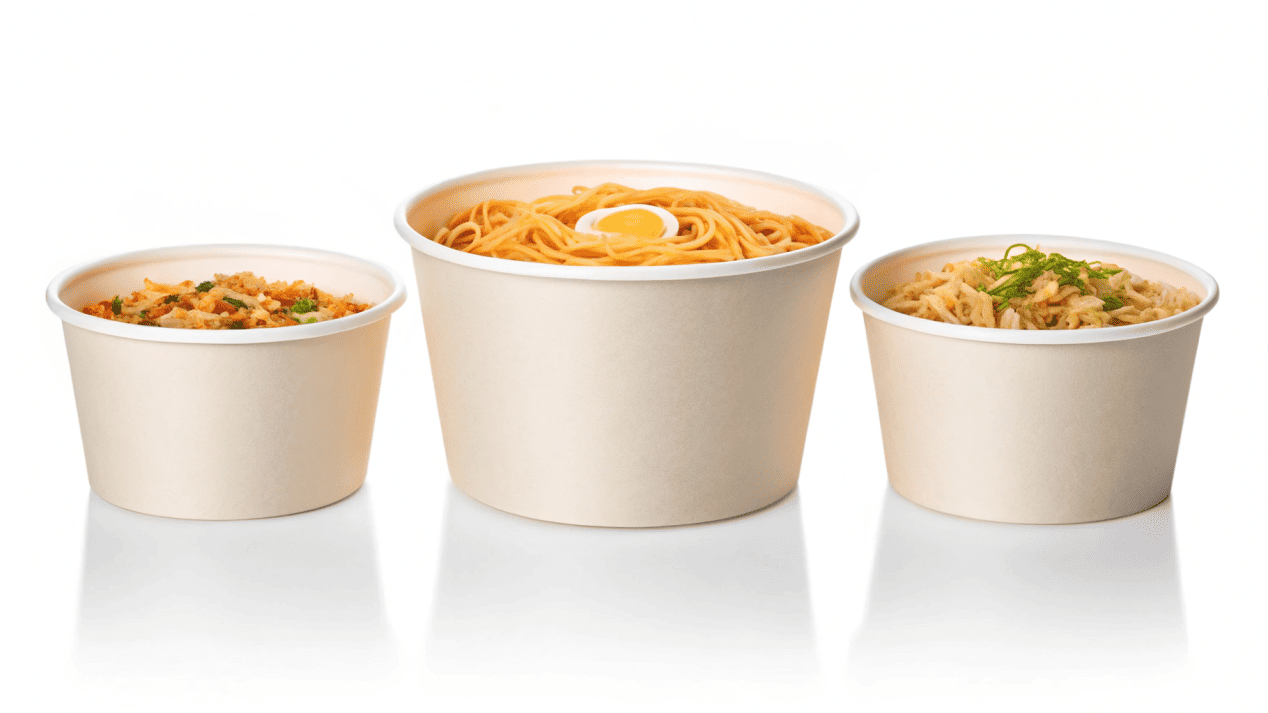
One of the biggest mistakes I see restaurants make is not matching the container to the cuisine. This is very inefficient. You need to think about your menu and choose sizes strategically. For drier noodle dishes with very little sauce, like a Pad Thai or a Lo Mein, a 26oz bowl is perfect. It gives enough space for the food without you paying for extra material you don't need. The most popular and versatile size is the 32oz bowl. This is the all-rounder, the one I recommend for any dish with a lot of broth like ramen, pho, or wonton noodle soup. It has enough volume to hold the noodles, the toppings, and a generous amount of soup without it being filled to the very top. This extra space at the top is crucial to prevent spills during transport. For very large portions, family-style meals, or big catering orders, you should use 46oz or even larger bowls. This size shows great value and is perfect for sharing.
Noodle Bowl Sizing Guide
| Size | Approx. Volume | Best For | Why It Works |
|---|---|---|---|
| 26oz | 750ml | Pad Thai, Lo Mein | Cost-effective for drier dishes with less sauce. |
| 32oz | 1000ml | Ramen, Pho, Soups | The standard for brothy dishes. Prevents spills. |
| 46oz+ | 1300ml+ | Family Style, Catering | Ideal for large, shareable portions and bulk orders. |
How Do Paper Bowls Handle Hot Soup Without Leaking?
You're worried that a paper bowl will get soggy and fall apart when filled with your signature hot broth. This fear makes you consider more expensive and less eco-friendly plastic containers.
High-quality paper bowls have two layers of defense. A strong paperboard provides the structure, and a waterproof inner lining made of PE (plastic) or PLA (bioplastic) creates a leak-proof barrier against hot oil and liquid.
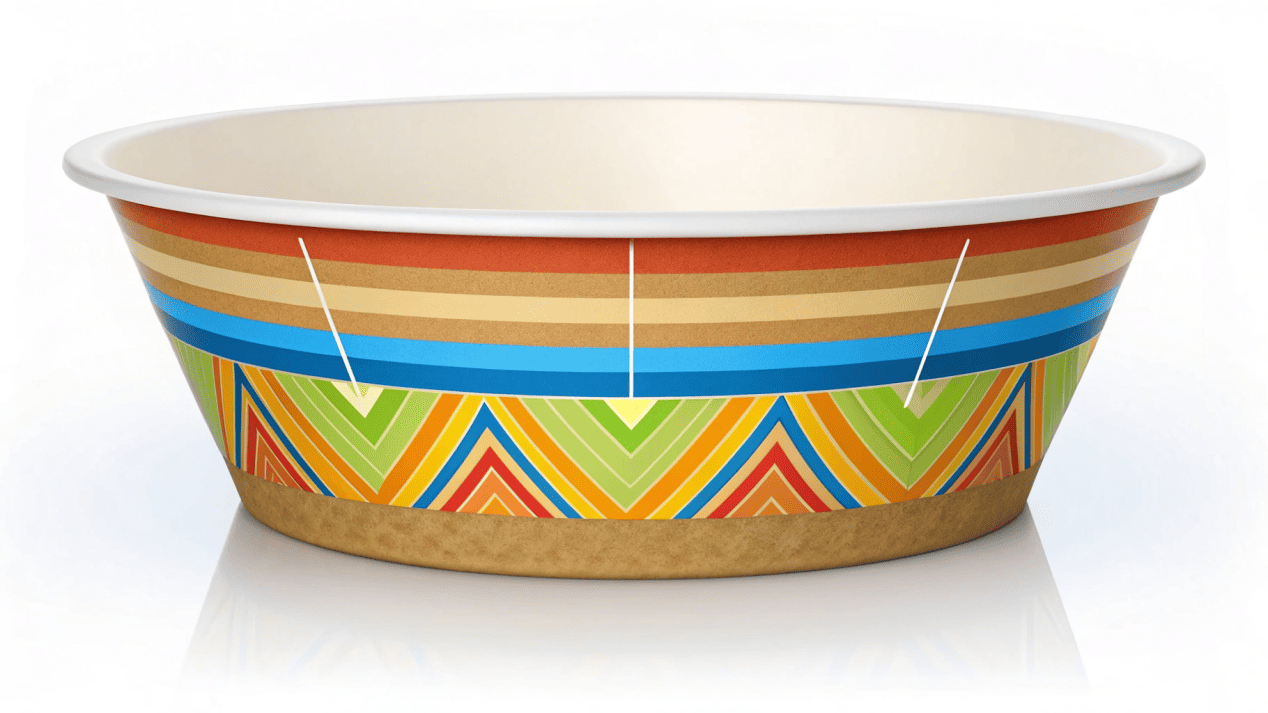
This is the most common question I get from restaurant owners, and it's a very important one. A paper bowl's ability to hold hot soup comes from two things: its skeleton and its skin. The skeleton is the premium paperboard itself. We use a thick, high-quality paperboard that gives the bowl its rigidity and strength. It won't collapse or get soft when it gets hot. But paper absorbs water, so it needs a skin. The skin is the waterproof lining on the inside. For many years, the standard has been a PE (Polyethylene) lining. This is a very thin layer of food-safe plastic that is bonded to the paper. It creates a perfect barrier that oil and hot broth cannot get through. It is extremely reliable. The modern, eco-friendly alternative is a PLA (Polylactic Acid) lining. PLA is a bioplastic made from plants like corn. It performs just as well as PE with hot liquids, but it has the added benefit of being commercially compostable. The lid is also part of this system. A good, tight-fitting lid is essential. For hot soups, I always recommend a vented lid. It has small holes to let steam escape, which prevents pressure from building up and popping the lid off during delivery.
How Can You Manage Packaging Supply for a Large Business?
Your restaurant or catering business is growing fast. You worry about running out of bowls during a busy weekend, which would be a complete disaster for your operations and sales.
Partner with a large-scale manufacturer to guarantee a consistent supply and get better bulk pricing. You must also choose bowls with a smart, stackable design to save huge amounts of storage space.
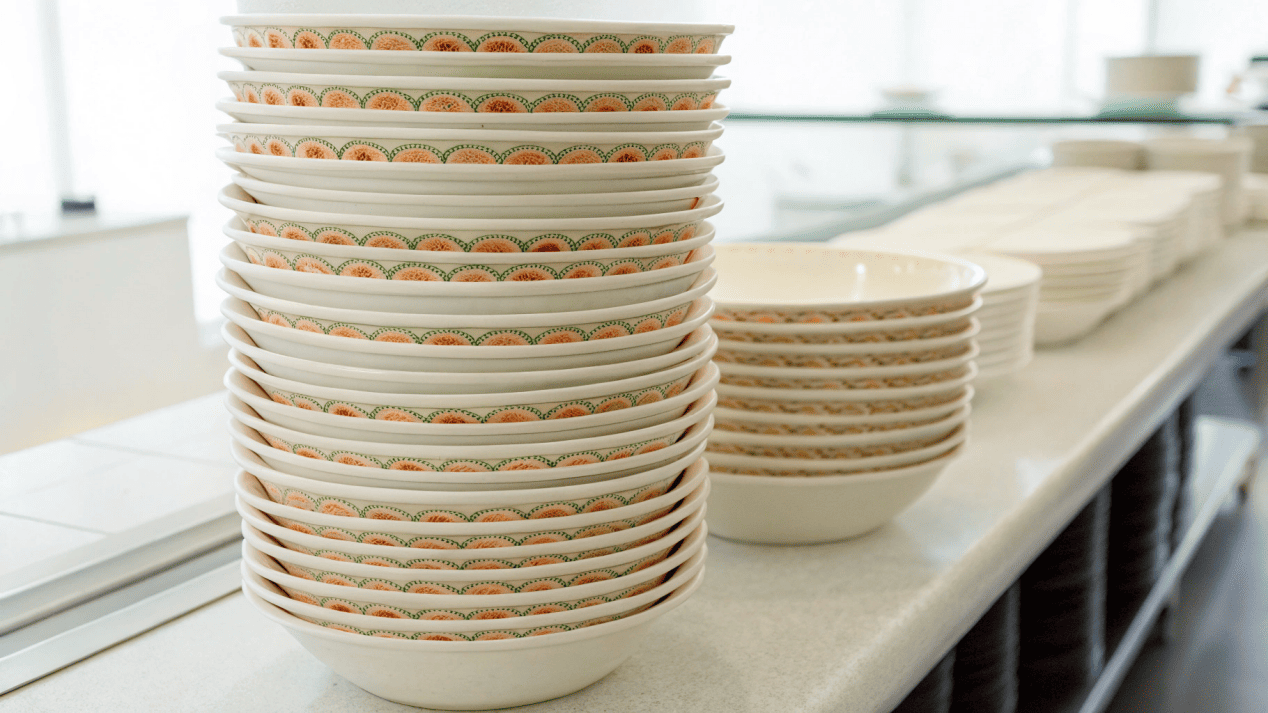
When you are a small cafe, you can just order a few boxes of bowls at a time. But when you become a large restaurant, a cloud kitchen, or a catering company, your packaging becomes a critical part of your supply chain. You simply cannot afford to run out. The first step is to work directly with a large-scale manufacturer. This ensures you have a consistent, uninterrupted supply, even during your busiest times. It also gives you access to bulk pricing, which significantly lowers your cost per bowl and improves your profit margins. The second, and often overlooked, part of supply chain is warehouse efficiency. I saw a catering kitchen once with giant boxes of bowls taking up an entire room. It was a mess. The solution is to choose bowls with a tapered, stackable design. This means each bowl nests perfectly inside the one below it. A single stack of 50 nested bowls takes up a tiny amount of shelf space. This is incredibly important in expensive city kitchens where every square foot of storage is valuable. It also makes it much faster for your staff to grab bowls during a busy rush.
Are There Good Eco-Friendly Options for Noodle Bowls?
Your customers are asking about sustainable packaging. You want to offer an eco-friendly option, but you're concerned it won't perform as well or will be too expensive for your business.
Yes, the best eco-friendly option is a compostable noodle bowl. These bowls use a PLA (plant-based) lining instead of plastic and paper from sustainable forests. They perform great and show customers you care.
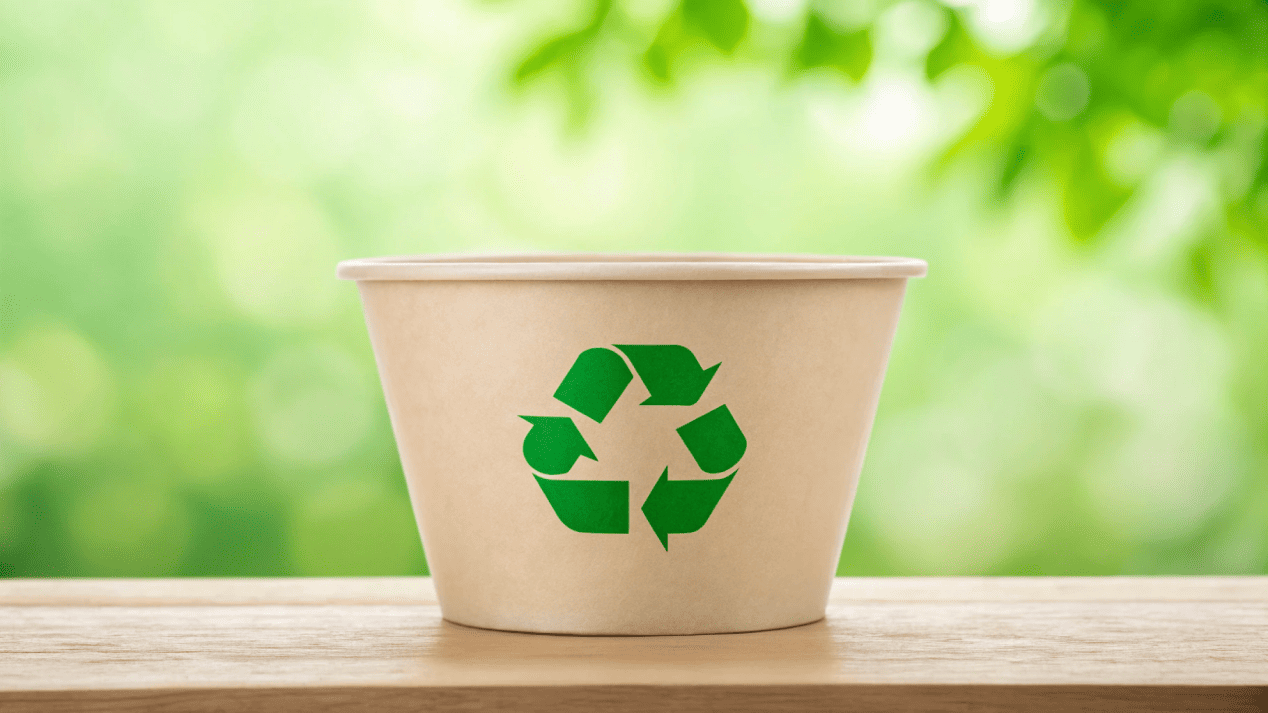
Today, being eco-friendly is not just a nice idea; it is good business. Many customers now choose restaurants based on their commitment to sustainability. The best green choice for noodle bowls is a commercially compostable bowl. These look and perform almost exactly like standard bowls, but with one key difference in their inner lining. Instead of a PE plastic lining, they use a PLA lining. As I mentioned, PLA is a bioplastic made from renewable plant starches. This means that after use, the entire bowl can be sent to an industrial composting facility and break down into organic matter. This is a very powerful story to tell your customers. You can also improve your green credentials by choosing bowls made from sustainably sourced paper. As a manufacturer, I make sure our paperboard comes from responsibly managed forests that are FSC certified. You can put this information on your menu, your website, or even print a small logo on the bowl itself. It tells your customers that you care about the planet, which helps build loyalty and attract new diners who share those values.
Conclusion
The right bulk noodle bowl is essential for any restaurant. It ensures food quality, improves operational efficiency, and builds your brand image, making it a critical investment for your
